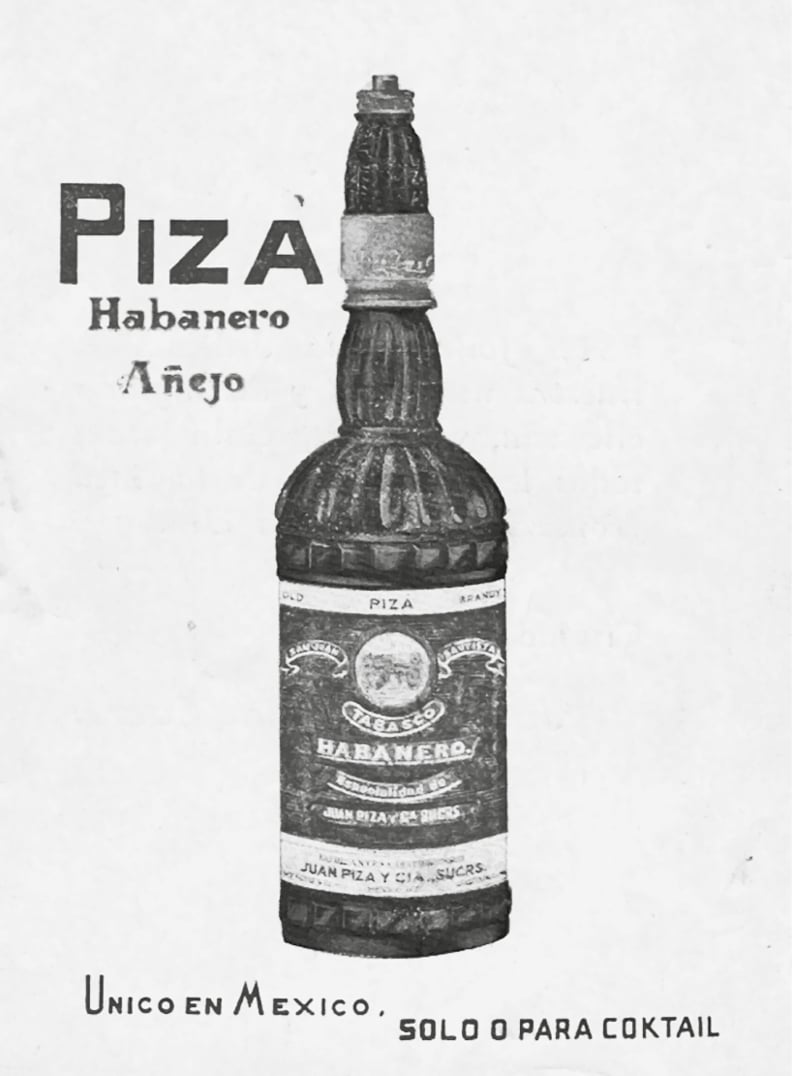habanero is an aged aguardiente from the Mexican state of Tabasco that is blended with small amounts of sherry or other sweet wines to create what is essentially a cane-based version of Spanish brandy. The most plausible of the several uncorroborated stories for the spirit’s origin has one Juan Ruiz, a Tabasco sugar hacienda owner, importing some aguardiente from Havana to have something to sell after a flood destroyed his crop. “The aguardiente was placed in wooden kegs and barrels that had previously held muscatel and sherry wines” from Spain, which, after “Gulf hurricanes and storms” stretched a voyage of three or four days to “six months,” transformed the raw spirit into something smooth and delightful. Perhaps a more likely story is that habanero was a conscious attempt to imitate the smooth, well-aged Cuban rums made by Bacardi and others. In any case, the leading brands, those of Berreteaga y Cia. and Juan Pizá y Cia., were established in 1865 and 1884, respectively. During the spirit’s heyday, which ran from the early 1900s until the 1950s, there were a number of other, much smaller companies making habanero as well.
Habanero enjoyed a good reputation, for the most part, with foreign visitors to Mexico, particularly as a base for cocktails and other mixed drinks, and several attempts were made to establish a market for it in the United States. The most ambitious came after Repeal in 1933, when the Mexican-American Habanero Company sought to capitalize on the increased familiarity with Mexican spirits that Prohibition had engendered and began importing both Berreteaga and Pizá. It went bankrupt a year later. Other attempts followed, particularly during World War II, when the American liquor supply was again restricted, but none took. Some Habanero is still made and sold locally in Tabasco, but it is not generally exported.
See also aguardiente and aguardente and chinguirito.
Fougner, G. Selmer. “Along the Wine Trail.” New York Sun, May 5, 1934, 6, and March 24, 1938, 11.
“Piza habanero añejo.” undated booklet (post-1934).
By: David Wondrich
Brochure for Piza Habanero, ca. 1925.
Wondrich Collection.
 Brochure for Piza Habanero, ca. 1925. Source: Wondrich Collection.
Brochure for Piza Habanero, ca. 1925. Source: Wondrich Collection.
